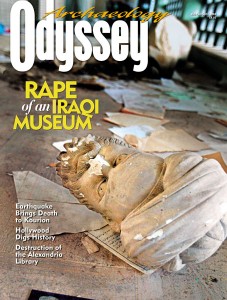Past Perfect: In Defense of the Realm
American archaeologist Herbert Eustis Winlock uncovers a mass burial in Thebes

It’s not surprising that the young Herbert Eustis Winlock (1884–1950), son of one of the highest officials at the Smithsonian Institution, was exceedingly curious about the world. After completing his studies in ancient history at Harvard, the 22-year-old Winlock signed on as the youngest member of the New York Metropolitan Museum of Art’s expedition to the royal necropolis at el-Lisht, an early-second-millennium B.C. site 25 miles south of Cairo. Winlock was later transferred to the Kharga Oasis, about 100 miles west of Luxor, where he helped restore a temple of the god Amun. In 1911 Winlock began excavating the mortuary complex of the 11th Dynasty pharaoh Mentuhotep II (2010–1998 B.C.) at Deir el-Bahri in the Valley of the Kings. Here he made a most remarkable discovery: the bodies of 60 soldiers slain in battle and buried in linen shrouds decorated with the cartouche of Pharaoh Mentuhotep. (This find is vividly described in the following excerpt from his Excavations at Deir el Bahari, 1911–1931, published in 1942.) Winlock’s work at Deir el-Bahri concluded his career in the field; in 1932, upon returning to the U.S., he was named director of the Metropolitan Museum. As his eulogist remarked following his death in 1950, Winlock had the rare ability to “‘retroject himself’ into a past civilization and make some of it come alive again for his contemporaries.”
Already a library member? Log in here.
Institution user? Log in with your IP address.

